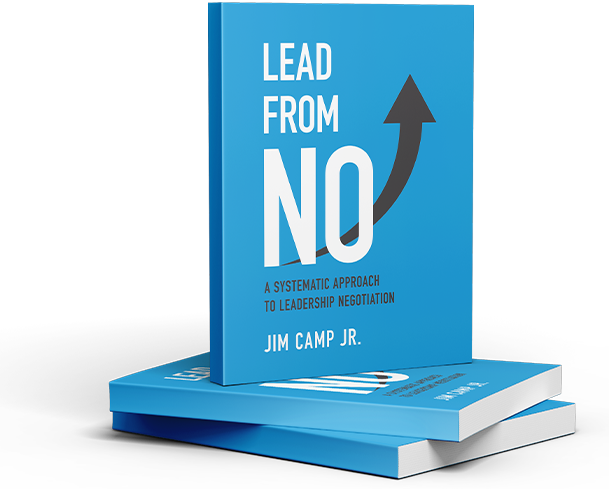Written by Stuart van Rij, Camp Negotiation Coach
Speed Read: Michael V. Pantalon, Yale psychologist, developed six questions that will help you influence someone in minutes. His approach even worked when the people were semi-inebriated.
Why? Rather than coercing your opinions and ideas, you’ll help the other person tap into their own reasons for the change.
It also respects their right to make a choice and encourages them to take a small step in the right direction. You can use these principles in your own efforts to persuade someone.
How do you influence someone in just a few minutes to make a giant change in their lifestyle for the long-term?
How do you make an immediate change in your own life?
The Seven-Minute Challenge
Doctors asked Dr. Pantalon to work with patients that had just come out of the emergency room as a result of alcohol-related incidents. Pantalon’s task was to encourage these patients to seek help for their drinking.
The challenge was that he only had seven minutes to influence the half-inebriated patient.
Pantalon tackled this problem by asking the patients six specific questions. This questions-based approach is from his book, Instant Influence: How to Get Anyone to Do Anything – Fast.
Your reaction to the title might be, “Can I influence anyone to do anything in seven minutes?” While there may be hyperbole in the title, Pantalon managed to get impressive results.
So, how successful was Pantalon? Using this approach, the ER doctors achieved nearly a 50 percent reduction in drinking from a seven-minute conversation.
Pantalon’s book reports that Instant Influence is now standard care in emergency rooms and trauma units in the United States.
Six Questions
Here are the questions that Dr. Pantalon recommended.
1. Why might you change?
2. How ready are you to change on a scale from one to ten?
3. Why did you not pick a lower number?
4. Imagine you have changed. What would the positive outcomes be?
5. Why are those outcomes important to you?
6. What’s the next step? Is there a next step?
If you think these questions are personal or confrontational, you’re right. That’s why you should get permission before asking these questions and carefully handle how you ask them.
Three Principles Behind Pantalon’s Approach
1. Respect the person’s autonomy (it’s their choice)
The minute you tell someone that they must do something, the walls start to come up, and they may do the opposite. As humans, we don’t like being told what to do.
If you take away options, people begin to resist and are not in a good place to be influenced. Pantalon’s method reduces walls by respecting the other person’s autonomy and their right to make a choice.
You can see this theme in the questions “Why might you change?” and “What’s the next step, if any?” These questions recognize that the choice is theirs and you are not forcing them.
An integral part of a negotiation is respecting the other party’s right to veto. They always have the right to say no. When you give people the right to say no, they feel more comfortable. They are also more inclined to share information and consider a change.
2. Tap into their reasons (not your own)
The heart of the questions is getting the other person to tap into their own reasons for doing something. The idea is to help them find a small spark of motivation.
In conflict resolution, the underlying principle is that people tend to take action when they hear themselves say why they want to take action.
Don’t settle for the obvious. You need to go deep and help them tap into their underlying “why.” Often, the “why” is something entirely unexpected.
Using logic and reason to convince someone doesn’t always work. Instead, you can help them discover for themselves how they will benefit from the proposed change.
One tool is open-ended questions. With good questions, you can focus their mind to help them discover the benefits of what you are bringing to the table.
Avoid the trap of telling, and instead, try to create discovery. Open-ended questions help someone discover the underlying problem they are trying to solve.
This is a tenet of the Camp System of Negotiation. Instead of trying to present your ideas on a silver platter, let the person discover what they want to avoid and how they might avoid it. If you do this, you are on the path to a more favorable – and stable – outcome.
When you attempt to convince, you are setting yourself up for failure. Instead, ask good questions, nurture, connect, and reverse to let them paint a picture of what they really want.
In other words, help them find the spark.
3. Be incremental
One of our biggest failures is to try to accomplish everything in the first conversation. Pantalon’s “next step” in the last question encourages an incremental approach. The person should take a baby step, as opposed to running a marathon.
There are a variety of reasons for this. One key reason comes from Robert Cialdini’s book, Influence: The Psychology of Persuasion.
Cialdini refers to this approach as utilizing the principles of commitment and consistency. Once someone commits to a small action, they are more likely to take another action consistent with the first. Their earlier commitment means they are psychologically inclined to stay on the same path.
Next Steps
Possible outcomes from trying to influence someone include success, partial success, or no success. You should not quit too soon.
It is worth reading Instant Influence to learn more about the subtleties of these questions and how to use them.
We are all susceptible to temptation. This raises the possibility that you could use these underlying principles to manipulate, rather than influence for good.
Of course, influencing for good is the focus of this article, and that should be your intent. Always be mindful of the reputation you want to cultivate.
Test Drive
How might you apply one of these principles in the coming week? Try to influence someone in a low-risk situation to practice this negotiation skill. Then, when something urgent emerges, you’ll be better prepared to deal with the challenge.
(This is an update of a June 2019 post.)
References:
“Michael Pantalon.” Psychology Today, https://www.psychologytoday.com/us/experts/michael-pantalon .
Cialdini, Robert. Influence: The Psychology of Persuasion. Harper Business, 2006.





